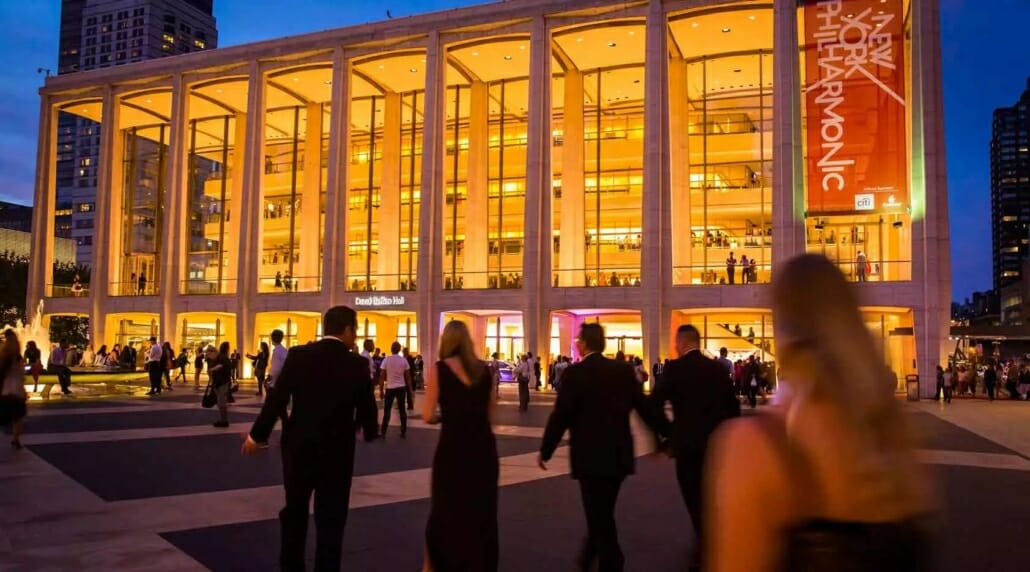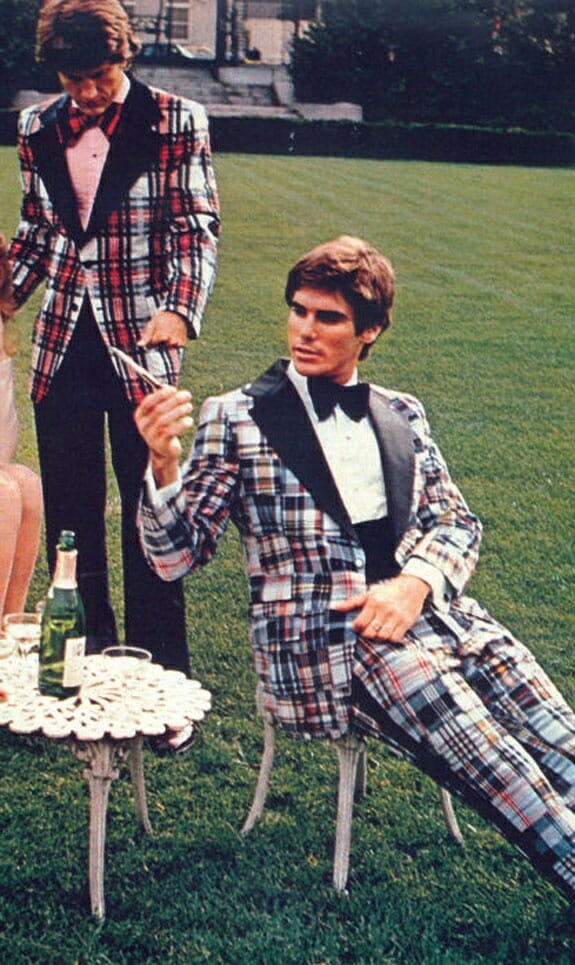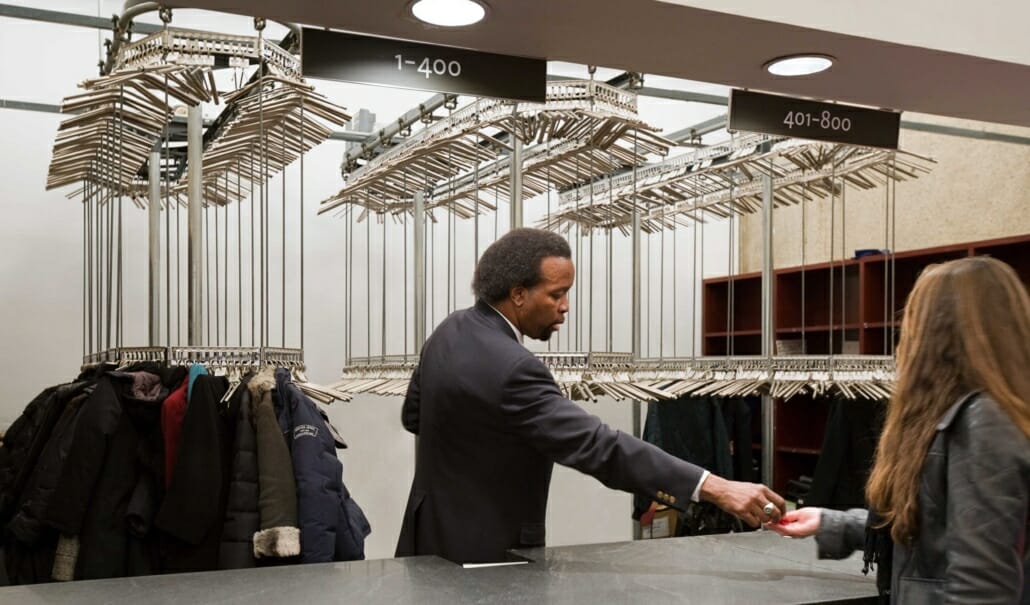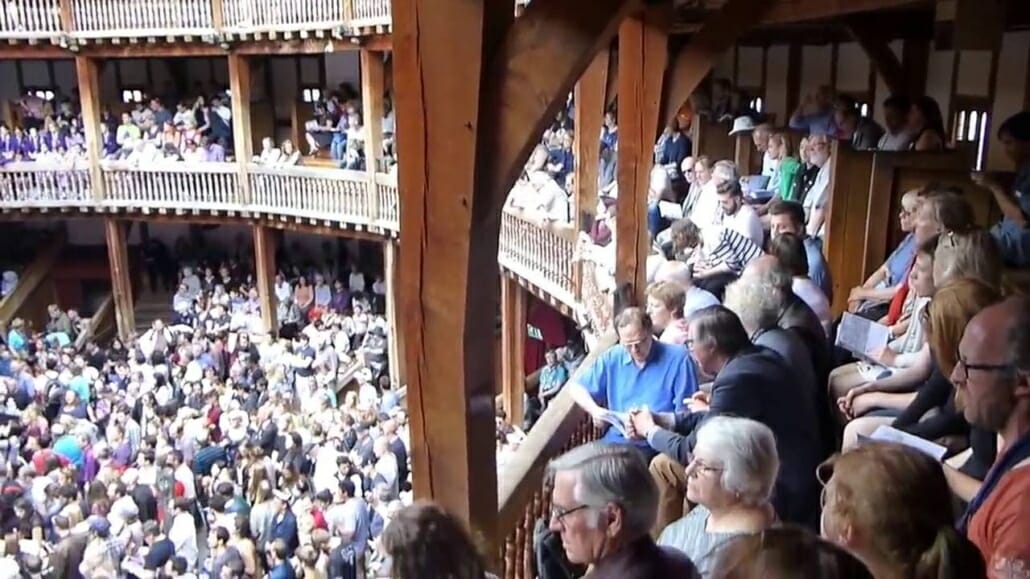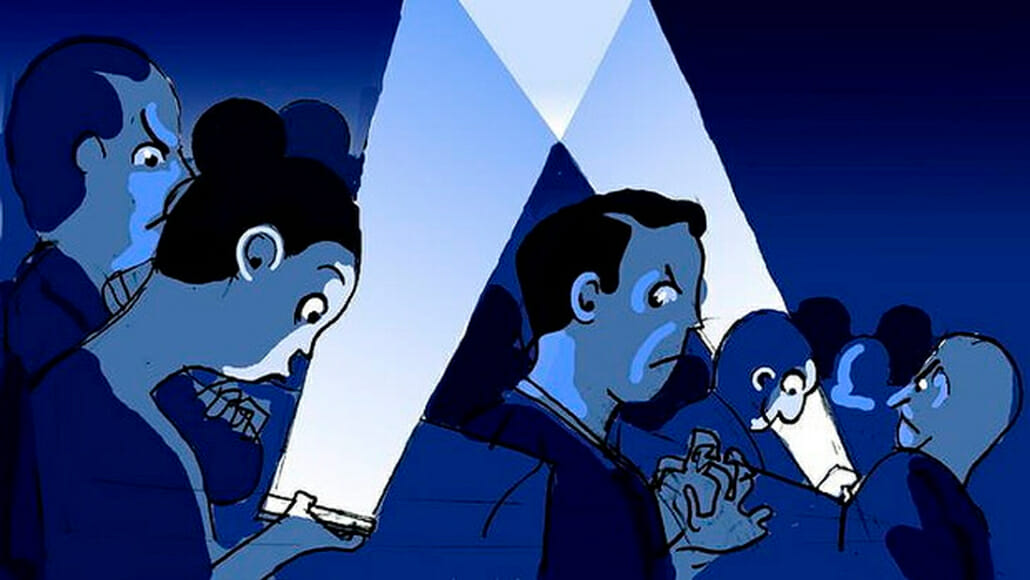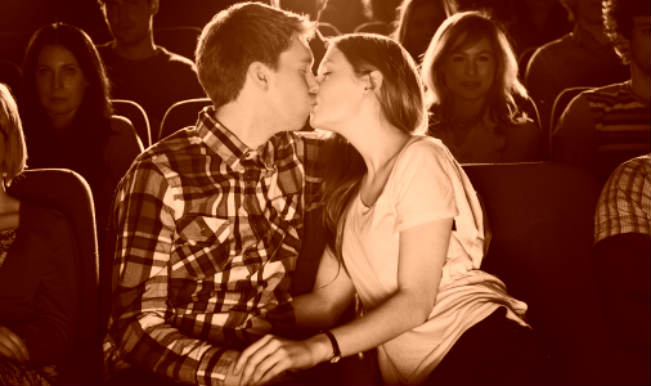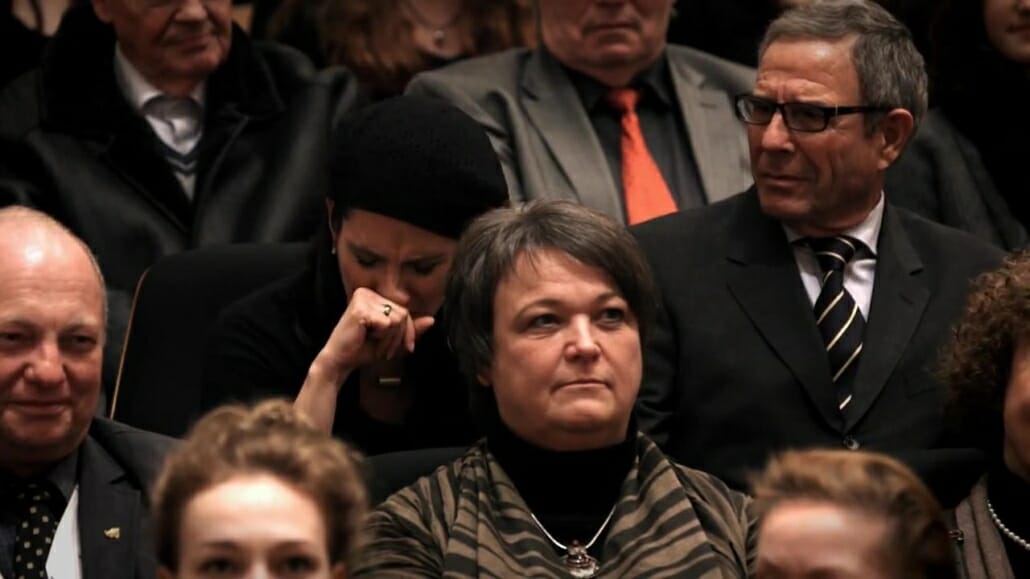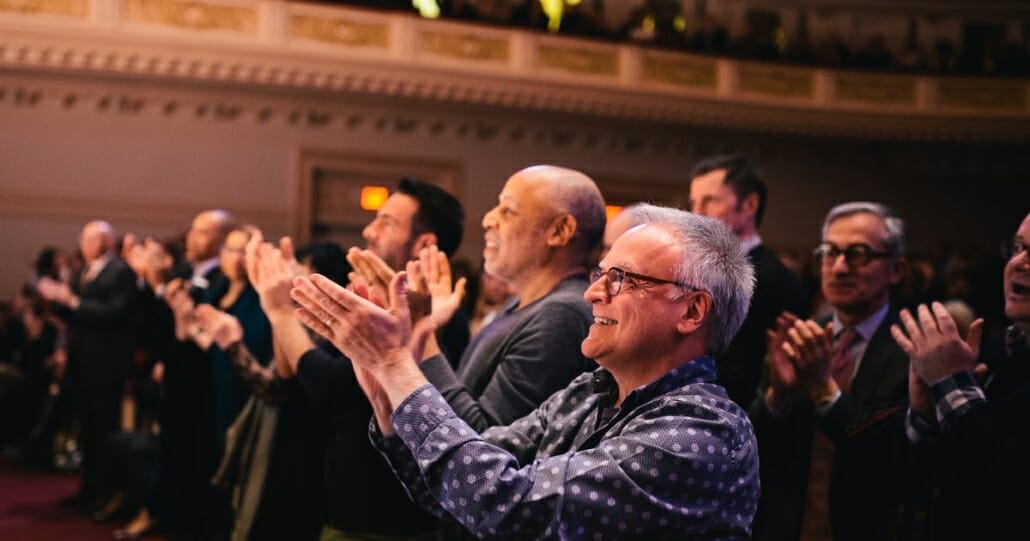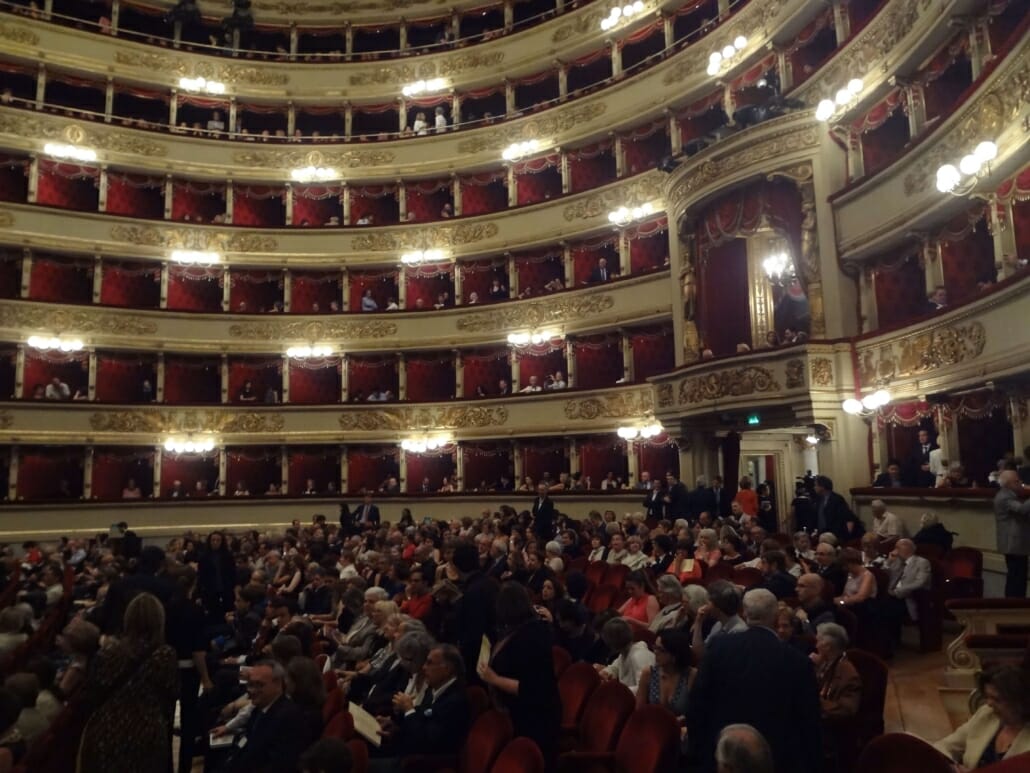An important aspect of a gentleman’s education and lifestyle has always been an appreciation for art and culture, which includes attending formal performances. An opera, ballet, or classical concert not only provides the opportunity to put on some classic tailoring but also the ability to immerse oneself in an atmosphere of refinement and good taste. To maintain this refinement, proper etiquette is essential. Here are some key tips for good behavior at the theater or concert hall.
1. Dress for the Occasion
The first rule of attending a performance is to observe the dress code. The Glyndebourne Festival in England, for example, requires black tie to attend its summer operas, though, as a sign of the times, most places are exceedingly relaxed. Even the Wiener Musikverein, home of the Vienna Philharmonic, merely “recommend[s] elegant concert dress,” for their gala New Year’s Eve concert, a rather vague standard. Glyndebourne, too, has begun to loosening their requirement to encourage “creative black tie,” which seems to invite colorful dinner jackets with notch lapels or bolo neckties. At most events, you’ll see people wearing everything from jeans and t-shirts to suits.
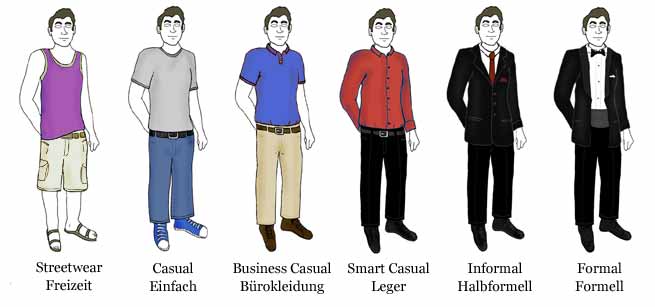
However, Gentleman’s Gazette readers will surely want to embrace performances as a rare instance when dressing up would not be seen as overdressing. For an afternoon, a sport coat or suit, both with a tie, is a no brainer, but in the evening you could very well wear a tuxedo or dinner jacket and not shock anyone. Dressing well for a performance gives the occasion an added sense of worth. It’s still possible to overdress or dress incorrectly, such as wearing a tuxedo to a free lunchtime concert or white tie and tails at a Broadway play, but in most cases your fellow concertgoers will not be aware of any faux pas, only that you are “really dressed up.”
2. Arrive on Time
Most tickets to performances will specify whether late arrivals will be seated at all, so showing up fashionably late will keep you out completely. But, even if you are allowed in, finding your seat is disruptive to others in your row and even the performers themselves in a small venue. The best approach is to treat the show as an important appointment, like catching a train, and arrive suitably in advance.
3. Use the Cloakroom
If it’s cold out and you arrive wearing an overcoat, check it and any other cumbersome objects in the venue’s cloakroom rather than leaving them in the aisle or on your seat. Assuming you hang onto them, you’ll be left clutching a coat on your lap for a couple of hours at best, and at worst, your items will block the passage of others in your row or get stepped on. Therefore, checking your items is a matter of both politeness to others and of safety, because if there is any sort of emergency, coats and bags in the aisles will impede evacuation. Long story short, it’s better to shell out a few bucks to pay for the coat check. After all, you’ve already paid much more for tickets; why not also enjoy the evening fully without having to mind your goods the whole time?
4. Say Hello to Your Neighbors
As people fill in on one or either side of you, nod, smile or say hello. There’s no need to take it further than that, but if the person next to you seems interested in talking, use the art of conversation to chat a bit before the performance starts. Perhaps you will continue to say a few words during intermission or after the show is over.
5. Stand to Let Others Pass
Unless you are at the center of a row, odds are that others will arrive after you and will need to pass to get to their seats. Rather than turning your knees to the side, good etiquette dictates that you should rise to let others go by if you are physically able. Otherwise, if you remain sitting, you’ll likely have people’s rear ends or crotches right in front of your face, which is potentially embarrassing for all parties. If you are the one that needs to go by, “pardon me” or the equivalent is good form, though you can’t really insist that others rise for you.
6. Put Away Your Screens
This is one that we’re constantly reminded of; after all, if movie theaters inevitably announce prior to the start of a performance that cell phones should be turned off, it’s even more important to do so in a live venue where performers can be distracted or interrupted. Because there is no amplification at most stage plays or operas, cell phone notifications or ringtones are extremely disruptive. Imagine a phone ringing in the middle of a great line in Hamlet or during a quiet and moving passage of classical music. Don’t count on turning down the volume or putting the phone on vibrate, as this may not “take.” Play it safe and turn off your phone entirely. This will also keep you from the temptation of checking your email or social media in the middle of the performance as well, along with the accompanying bright shaft of light emanating from your device. Concentrate fully on what is happening on the stage, a rare few hours without technological distractions.
7. Remain Quiet and Still
In the past, prior to the mid- to late-19th century, performances of all sorts were less rigorous in terms of rules. Often, concerts were accompanied by dinners or parties in which the participants talked while an orchestra played or a vocalist sang. Theatrical performances at Shakespeare’s Globe or on the streets of medieval Europe were either part of a fair-like atmosphere that involved walking around, eating and talking back to the actors on stage. Only in the past 150 years or so have performances of classical content become more rigid, perhaps influenced by a Victorian sense of propriety that spread beyond the confines of Great Britain.
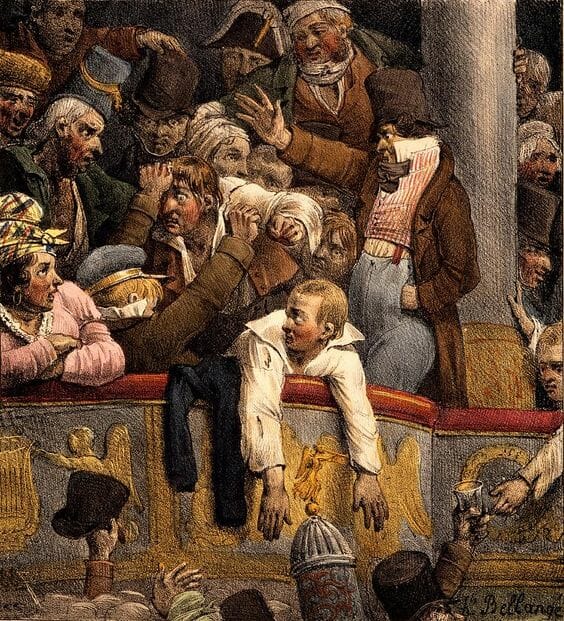
Nowadays, the expectation is for one to remain seated in a nearly unmoving posture, stirring only when there are gaps in the action or to applaud. Fidgeting and humming along to the music being played are definite no-nos though spontaneous laughter and other reactions are fair game when viewing stage plays. Toe-tapping to energetic musical passages is okay as long as it isn’t noticeable by your seatmates. The motive behind all this self-regulation is ensuring that you are not interfering with the enjoyment of others around you. If you are talking to your date throughout a show or constantly restless, those around you will be negatively affected. Thus, attending a performance is a situation where one exercises consideration for others rather than being selfish. This extends to behaviors like passing gas, crunching potato chips and public displays of affection while in your seat. While eating popcorn or nachos is fine at a movie with loud speakers, the relative quiet of a theater or symphony hall makes every crunch and crinkle obvious. Couples on a date who snuggle and put their heads together can block the sight-line of those in the seats behind them. Yes, it’s great to be in love, but either exercise restraint or get a room instead of tickets to a play.
8. Stop Coughing!
A word on coughing, a particularly infuriating disruption of silence: Anyone who has been to a classical concert knows that there will usual be multiple people coughing, usually during quiet moments, creating considerable annoyance for those who want to enjoy the music. Interestingly, a scientific study has shown that the average coughing bout of a person at a concert is the equivalent of coughing 36 times a day, which suggests it is not random but intentional; what’s more, it happens more often during slow, quiet movements when it causes the most irritation to artists and audience members alike. Though the exact cause is not known, evidence suggests that the cougher may be bored or uncomfortable with the amount of quiet restraint he or she needs to exercise; reaching a breaking point, he or she coughs to release tension. Whether this is intentional or subconscious, being aware of it should help anyone stop themselves unless they are truly sick with cough symptoms. In this case, taking a cough suppressant, using lozenges, or staying home are viable options. If the urge to cough persists, one should muffle it in a handkerchief or hold it in until louder moments in the performance or when there is a break.
9. Consider Keeping Young Children at Home
Quiet and still are two adjectives not often applied to young children, so be realistic about the ability of your child to remain in this state for a performance that runs for more than an hour without interruption. Though you may want to expose your little ones to high culture as early as possible, realize that below a certain age they may not be capable of the sort of decorum required to attend a show. Give them the exposure at home via video and treat live events as a parents’ night out until you know they are ready. However, you can try an outdoor performance in a more casual setting or attend special fun, interactive concerts for parents with children hosted by many orchestras.
10. When to Applaud
One of the scariest aspects of a classical concert for newbies is knowing exactly when to clap. Does one applaud at the end of an entire piece or between individual movements or arias? And how do you know when a piece has ended? Inevitably, at most concerts, you’ll encounter someone who begins clapping at the wrong time, but you don’t need to be “that guy.” The simplest solution is to wait a few seconds and let other people begin clapping first; then, follow their lead. However, if you want to know what they know, do a bit of studying. Read the playbill to see how many movements a piece has and which ones are slow (adagio) or fast (allegro). With some familiarity, you can predict fairly well when a piece is over. Besides this, look for cues from the conductor or performers. If they lower their arms or instruments, nod their heads slightly, or smile for the audience, it’s likely time to clap. You usually don’t want to clap between individual movements of a larger piece, though this isn’t a hard and fast rule. If something is sung or played particularly well, more than one person will certainly feel compelled to clap. Back during the 18th and 19th century, audiences actually applauded much more frequently at any sort of virtuosity displayed on stage. And, the artists ate it up as a sign of appreciation. Nowadays, we are, again, more restrained.
11. At the End of the Performance
When the entire performance is over, it is customary to show your appreciation for the efforts of the performers, which, hopefully, is well deserved. At the conclusion of a play, extended applause is usually in order. For musical events, standing ovations have become fairly common, especially if the performance was particularly memorable or enjoyable. More extroverted audience members will should “Bravo!” (for a male performer) and “Brava!” (for a female performer) when singers or musicians take their individual bows or “Bravi!” for the whole ensemble. Unfortunately, you may hear only “bravo” being shouted as the generic term, but with the mini Italian lesson above, you now know better. This show of energy by the audience is a sort of release after having sat still and silent for so long. Even conservative Brits will stomp their feet, whistle and shout with gusto. However, you can choose whether or not to yell based on your personality and level of enthusiasm for the show. On a final note, take your time in leaving. There’s no reason to rush toward the exits like many people do. Avoid stampeding and bask in the afterglow of a wonderful performance, departing at your leisure.
Conclusion
It used to be that the codes of etiquette and proper dress were an entree into high society and a bar against those who were uneducated in the behaviors required at a performance. These days, relaxed standards and accessible venues have enabled classical music and theater to reach more people then ever before. Yet, this doesn’t mean that anything goes. Being considerate of others and understanding the etiquette of attending a performance elevates the experience for everyone without diminishing your individual enjoyment.
Etiquette When Attending a Performance published first on https://medium.com/@CostumeCorner
